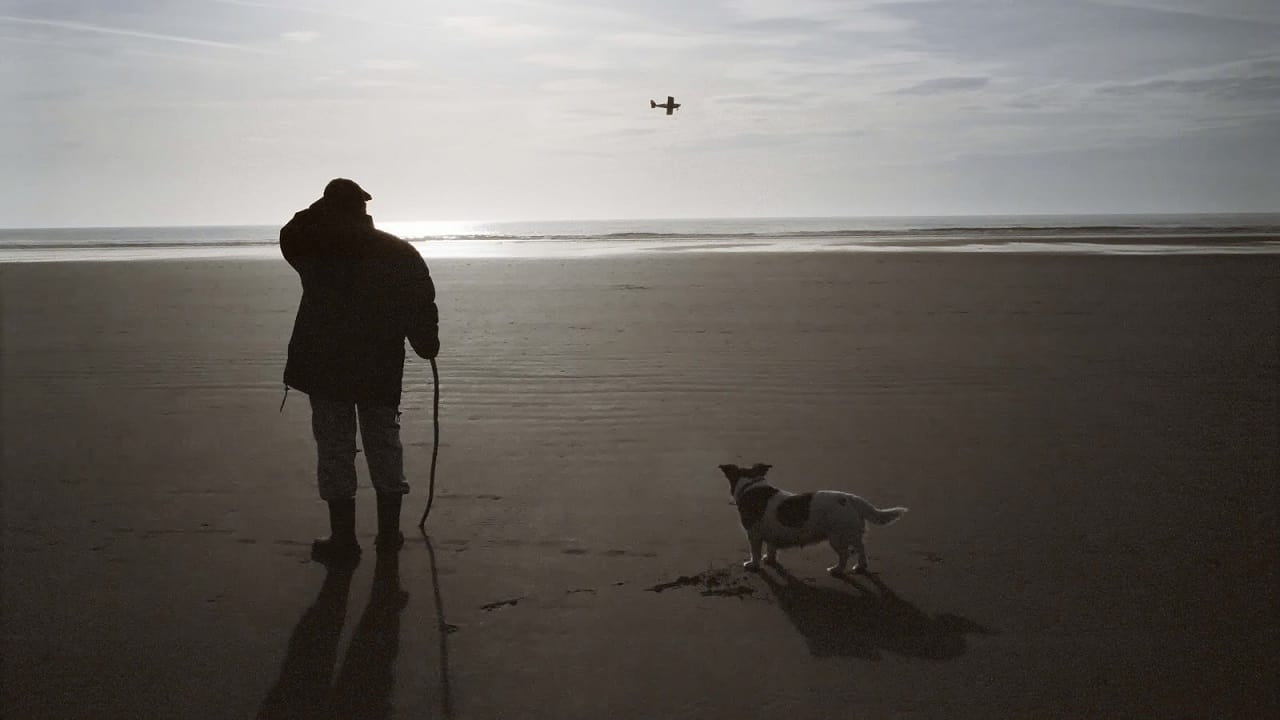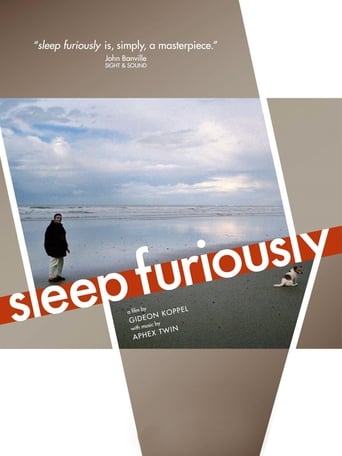

That was an excellent one.
... View Moreeverything you have heard about this movie is true.
... View MoreThis is a gorgeous movie made by a gorgeous spirit.
... View MoreIt's the kind of movie you'll want to see a second time with someone who hasn't seen it yet, to remember what it was like to watch it for the first time.
... View MoreSleep Furiously is a documentary that's something of a labour of love for Welsh rural way of life in a changing world. Liverpool-born director Gideon Koppel is the son of Jewish refugees who settled in the Trefeurig community, consisting of a few villages/hamlets in West Wales, where he was brought up as a child. His father had been a well-known painter in South Wales, and his mother appears in the film.Although not far from the main route to the sea for holidaymakers from Birmingham and the English West Midlands, Trefeurig is quite off the beaten track, in one of the least populated patches of England and Wales. This is not a film the Wales tourist board might come up with; it concentrates on the simple daily lives among the relatively austere, often bald hills, rather than more spectacular and crowd-pulling spots like the waterfalls at nearby Devil's Bridge/ Pontarfynach, or the coastline. Nor do we see the abandoned nearby lead and other mineral mines. Oh, this is the area too of the great (Welsh language) medieval poet Dafydd ap Gwilym , who wrote of courtly love, animals and nature, and some more bawdy goings on, including in praise of the penis. This film has conjured up in some critics' minds comparisons with another (lesser) poet Dylan Thomas' Under Milk Wood, but Thomas' view of Welsh life is more comical and satirical, set on the coast further South.The film's title comes from a Noam Chomsky phrase "colorless green ideas sleep furiously"- that is one of its contrasts, as is its green-ness compared with greys too. With the beautiful and artful shots, it's more than a straightforward fly on-the-wall documentary- while unobtrusive and without voice-over, the director's character comes through. It's not so much a Wiseman film as a the film of a wise man, i'd say. Koppel has been employed teaching on films at Aberystwyth university, several miles from the film's setting. I like the way the static camera allows movement onto and off screen, generally resisting temptation to follow, and so increasing the sense of off-screen spaceSleep Furiously encourages contemplation. It quietly takes its time, mixes numerous (relatively) long takes with some shorter scenes and "timelapse", long shots with close details, mainly static camera with occasional movement, low shots e.g of hooves, with higher rural views. It could be considered a tapestry, interested in patterns, textures and effects of light, and also in the seasons and elements. The wind rustles the grass, blows clean white sheets on a line. The wind makes mischief with a new signpost, turning it in wrong directions- we may not need the accompanying ditty from a local to see how modern ways aren't always the most practical. The camera dwells on rocks, stones, tools, the light falling on a moth's wings, a pig's curly tail, while the sheep make memorable patterns in a landscape that would bring a knowing smile to Kiarostami.Considered lyrical and poetic, it's unpretentious as the lives it portrays and the sponge cake we see being prepared. At its heart is the mobile library, a means for chat and for the outer world to penetrate the local consciousness. We see machines alongside older ways, mention of computers with sheep dog trials (a practice run), jams and vegetables, children dancing and making music. Although the school and future of the community may be under threat, alongside yawning, tea-making, rambling elders, we are reminded of youthful potential- fireworks a short exuberant contrast to the slowness of the pace and land.There are pleasures to be gained from small contrasts: birth, death, vegetarian cookbook, mention of a pig's future fate . Seek them and ye shall find. Trefeurig is part of Welsh-speaking Wales (the strongholds of the ancient language are mainly in the West), but there are English voices too. The general impression remains one of communal harmony. Roger Ebert found the film lovely but too complacent. Its soul is good and i think he's wrong on the second count. It was a worthy Sight & Sound film of the month.It's a film for animal lovers (sheep, ferret, dogs, cat, cows, fish count them!), taxidermists, tree lovers (one fine noble tree stays in the mind), tool-makers, agricultural students, anthropologists, cloud-watchers, tao-ist meditators, cultural historians, admirers of scenery and cinematography, as well as linguists. Approach it as you want, but watch in the right frame of mind, immersed in its gentle rhythms, and it should be very rewarding.
... View MoreThis film is a joy.Its wider messages of rural decay are evident but its specific scenes are portraits of individuals, relationships, landscapes and history that are worthy of consideration independent of the bigger theme.A yellow mobile library is allowed Big Picture time to cross a whole screensworth of green Welsh mountain. This beautiful scene alone is worth the watch. The library's aesthetic and romantic appeals hold hands with the utilitarian demands of its users who value and use this service.Meeting points are charted and cherished - school, the fair, church, shops, sheepdog trials, tea.Weather and the seasons frame but don't constrain the 'story'.The past is present, maybe the future is not, but this film is about now and, though (I feel) elegiac, not morbid.The unscripted (but deftly edited) humour (non-compliant sheep, frozen posted owls and mobile library health & safety, that would all do Coogan/Brydon/Gervais proud) adds both lightness and gravity to the mix.The darkest picture in the film, a curtain flapping in a deserted farm house near the film's end recalls 'Time Passes' in Virginia Woolf's 'To The Lighthouse'; the message may not be hopeful, but this film finds Lily Briscoe's line.
... View MoreI completely agree with the above writer. The disjointed nature of the film made it impossible to follow any thread, and anything I was interested in was cut short. For instance, when the calf was born and the mother was licking it - endlessly - did it survive? Why did the dogs fight? I'm afraid I too thought all the longueurs were pretentious, and my neighbour looked at her watch four times! I feel that, although it was made with the best of intentions, there was a strong element of the Emperor's New Clothes about this film. If it was about the demise of a village, it was not made clear why the school closing meant everything else had to go. For me it didn't make a story.
... View MoreI loved this film - I loved the slow pace of it, the meditative quality, the way it reflected the quieter slower rate at which village & agricultural life turns.The space & time devoted to "little happening" was perfect for me - especially when it was showing the beauty of the Welsh landscape.The simplicity & honesty of the tales, allowed to naturally come across was beautiful & reminded me of David Lynch's "Straight Story".The way that the village, community & the surrounding agriculture seemed ancient, only moving with the seasons was deftly shown. Poignantly, simultaneously the film also showed it was worryingly at imminent risk of losing some of its essential aspects.If you can't sit still for 5 minutes & enjoy a setting sun, running river or rolling hillside, if you can't remain quiet & enjoy the silence, then this film's probably not for you. I'm afraid there isn't even a single car chase (only a brief sheep chase).For everyone else, turn down the revs & sink into this low-key masterpiece. ______________ Update after Celia's comments - I don't understand why everything needs to have some perfectly realised & resolved answer - life's not like this, sometimes we never find out what happens, and sometimes our lives are simply enriched by inexplicable yet beautiful things (like this film).This is the sort of film that is a soft target for accusations of "pretension" (or Celia's "Emperor's New Clothes") but there really is no pretence/pretension that this is going to be a normal A->B->C narrative, it's just not what it is. It's broadly filmed as documentary, but not a prescriptive one. What it is to me at least is a beautifully shot vignette, with snapshots, snippets & moments of many lives and stories, none of which does it try to fully provide a resolution. Yes I've got questions I'd like answered (my friend wondered did the librarian ever use the laptop for anything more than a place to stamp the books?) but I don't expect to get the answers from the film itself, and that's OK by me.The closest thing I've seen to it is the Patrick Keiller masterpieces "London" & "Robinson In Space" yet they are scripted, narrated & very thought out mixing esoteric elements of art, history, poetry, economics trivia and wit, all together again with great photography. The simpler more natural (no commentary, no sign of a behind-camera interviewer) version perhaps makes for a less focused film, but also one I just allowed myself to go with its slow, winding, meditative pace.
... View More